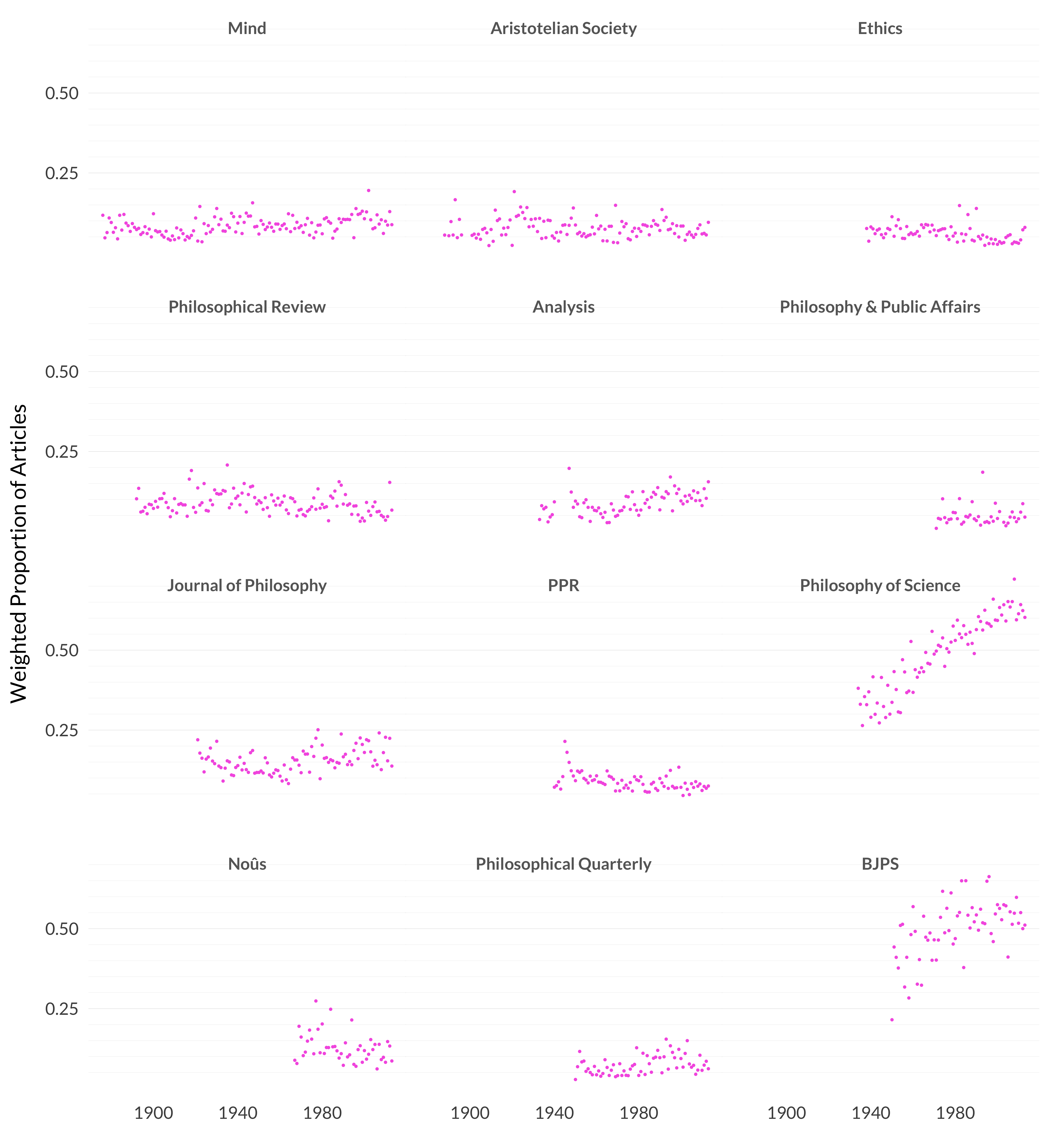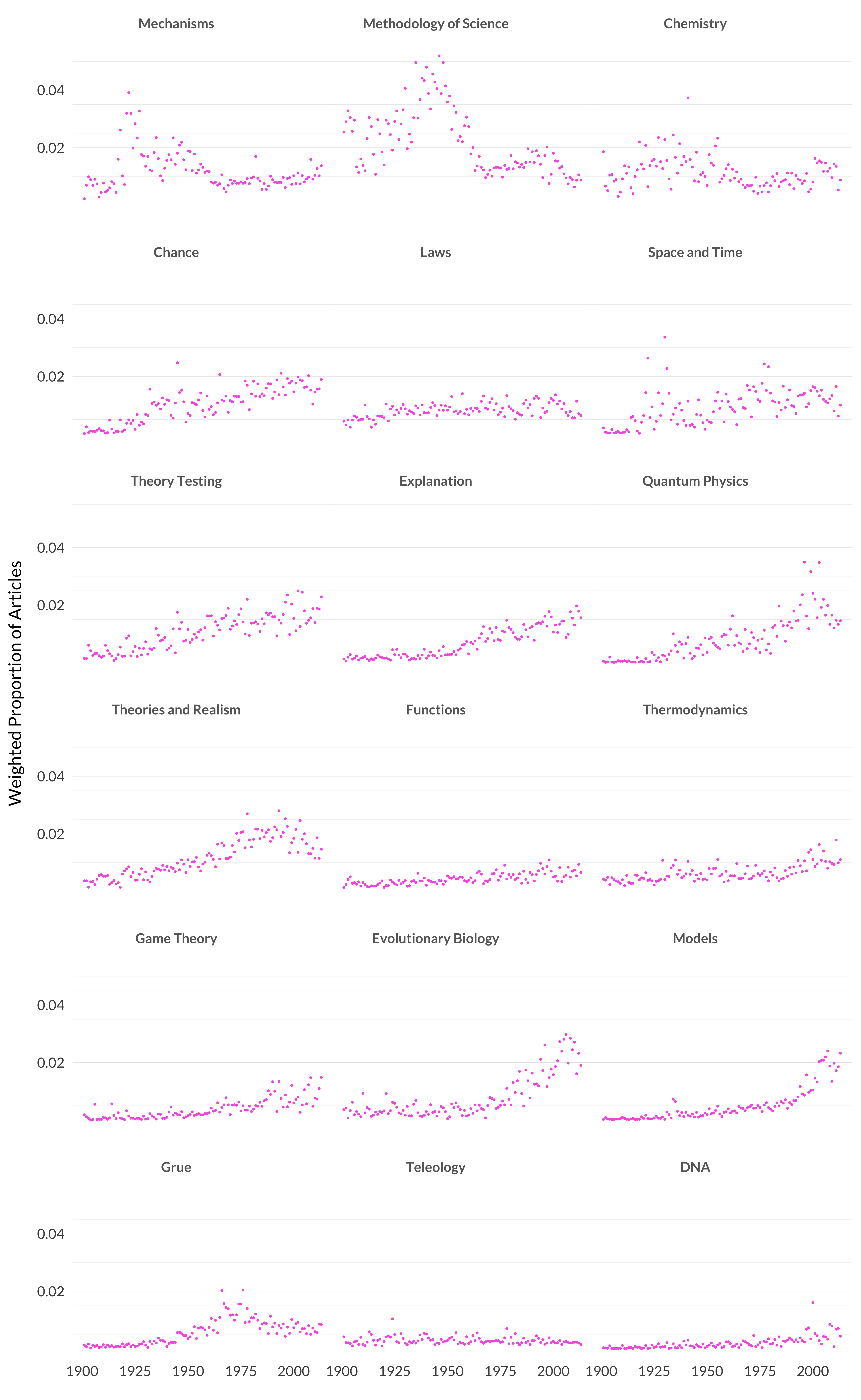4.9 Philosophy of Science

Figure 4.22: Proportion of each journal’s yearly publications in Philosophy of Science
The trend here is fairly simple, and it resembles what I said about the ethics category. The specialist journals have become more specialized, and the other journals haven’t changed a lot. Now in this case, that’s in part because most of the journals were doing very little of (what we’d now call) philosophy of science. I think they would have disagreed with that description; some of what I’ve called metaphysics, and some of what I’ve called logic and mathematics, they would have called philosophy of science. But by modern lights they weren’t doing very much of it, and they still aren’t. The big, and important, exception is Journal of Philosophy, and it hasn’t cut back its philosophy of science coverage.

Figure 4.23: Topics in Philosophy of Science
The model carves up the philosophy of science topics very finely, and so it’s hard to eyeball a lot of trends. Quantum goes up rapidly to a peak in the 1990s. (I did not realise it wasn’t still growing.) Evolutionary biology starts later, and maybe is still growing. The realism wars of the 1980s didn’t quite end, but maybe they are fading away. On the other hand, there is more attention being paid to models, and some of that is related to the realism wars.